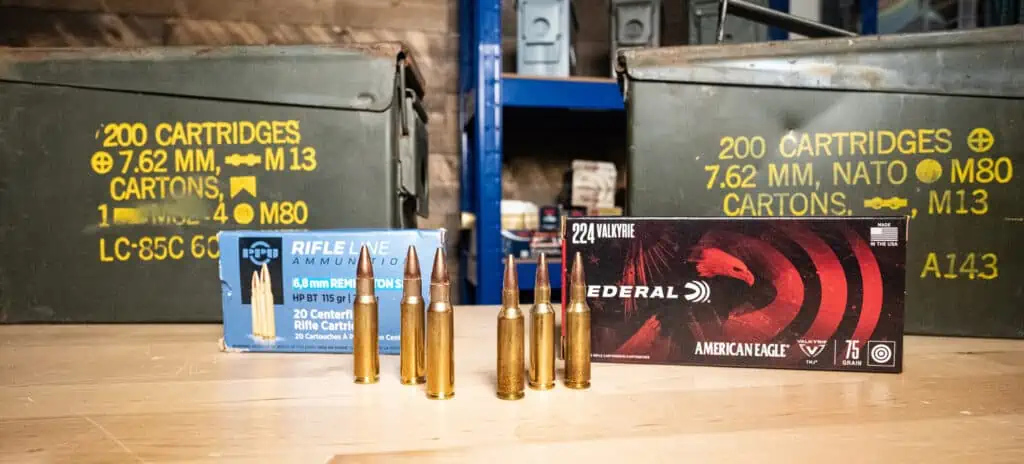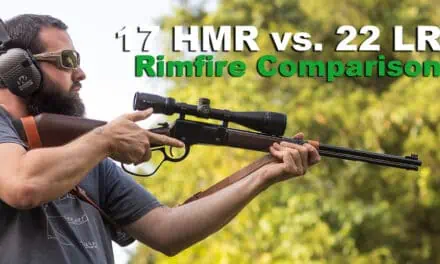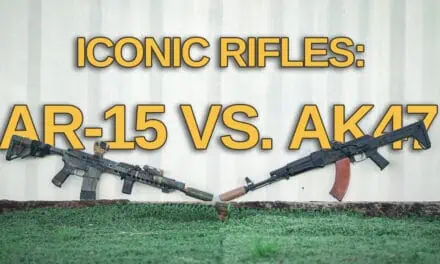In the endless pursuit of faster, stronger, longer ammunition, manufacturers have created a swarm of new cartridges. Thanks in no small part to the versatility and adaptability of modern sporting rifles, manufacturers have tinkered with old rounds, changed the length, narrowed the bullet, widened the shoulders, trimmed here, slimmed there and packaged each new creation as the next revolution in firearms.
New gun owners and seasoned shooters looking to add a new cartridge have to sort through a haystack of cartridge options to find their proverbial needle.
Most, while useful in their own ways, are far from revolutionary.
But they still have value.
The 6.8 Remington Special Purpose Cartridge, commonly called the 6.8 SPC, was created in 2004 in a combined effort between the U.S. Army and Remington Arms. It’s a relative newcomer in firearms, an industry that still uses 100-year-old cartridges.
The .224 Valkyrie is even newer. Created in 2017 for lightness and speed in target-shooting and hunting, the Valkyrie is steadily finding a fanbase among the shooting community.
6.8 SPC vs 224 Valkyrie

Generally speaking, the 6.8 SPC delivers a faster muzzle velocity and more energy downrange. With lighter bullets, the 224 Valkyrie paints its speed better downrange and delivers a flatter trajectory. Both rounds are capable at taking small and medium sized game at short and mid-range distances of several hundred yards.
6.8 SPC vs .224 Valkyrie: Specs
| 6.8 Remington SPC | .224 Valkyrie | |
|---|---|---|
| Released | 2004 | 2018 |
| Bullet Diameter | .277 inches | 0.2245 inches |
| Neck Diameter | .306 inches | 0.256 inches |
| Base Diameter | .422 inches | .4207 inches |
| Case Length | 1.687 inches | 1.6 inches |
| Overall Length | 2.26 inches | 2.26 inches |
| Bullet Weights | 85 - 120 grains | 60 - 90 grains |
| Typical Firearm | AR-style modern sporting rifles | AR-style modern sporting rifles |
Physical Differences
These two cartridges, although both for AR-style rifles, have very different profiles. Lengthwise, they are exactly the same. They also have a similar base diameter. But bullet width, neck diameter, and bullet weight are all different.
One of the most noteworthy aspects of this size difference, especially for hunters, is the bullet weight. 6.8 SPC starts at about 85 grains and goes as high as 120, while the .224 Valkyrie starts at 60 grains and maxes at about 90. There is overlap, but if a manufacturer makes both cartridges in a product line, the 6.8 is often (but not always) heavier. For example, Hornady makes V-MAX varmint-hunting rounds for both cartridges; the 6.8 holds a 110-grain round; the .224 Valkyrie packs 60 grains.
Market Conditions/Ammo Availability
The market conditions for these cartridges are fairly similar. Neither is a high-volume, well-established round with dozens of options on store shelves. 6.8 SPC arrived to the market around 2004 and 224 Valkyrie showed up in 2017. The cartridges overlap quite a bit in pricing. Market conditions, frankly, don’t favor one or the other and won’t impact your decision.
6.8 SPC vs .224 Valkyrie: Performance
Velocity

It all starts with velocity. So how do these two compare for muzzle speeds and downrange velocity?
| Ammo | Muzzle Velocity (fps) | 200-Yard Velocity (fps) |
|---|---|---|
| 6.8 SPC - Federal Fusion - 90 Grain | 2,850 | 2,221 |
| 224 Valk - Federal Fusion MSR 90 Grain | 2,700 | 2,291 |
| 6.8 SPC - Remington UMC 115 Grain | 2,625 | 2,053 |
| 224 Valk - Remington UMC 75 Grain | 3,000 | 2,539 |
| 6.8 SPC - Hornady V-MAX 110 Grain | 2,550 | 2,100 |
| 224 Valk - Hornady V-MAX 60 Grain | 3,300 | 2,578 |
With a lighter bullet, the .224 Valkyrie speeds past the 6.8 SPC. In two of the three muzzle velocity comparisons, and all three 200-yard comparisons, the .224 Valkyrie was faster.
Only when the two shared a bullet of the same weight (90 grains, Federal’s Fusion MSR products) did the 6.8 SPC have a faster speed. But something interesting happens here. While the .224 Valkyrie starts slower, it maintains its speed; by 200 yards it’s faster than the 6.8 counterparts. In fact, it’s faster than all three of the 6.8 SPC rounds we looked at.
Energy
Speed is great, but most shooters want energy as well. Here’s how the rounds perform for muzzle and 200-yard energies…
| Ammo | Muzzle Energy (ft-lbs) | 200-Yard Energy (ft-lbs) |
|---|---|---|
| 6.8 SPC - Federal Fusion - 90 Grain | 1,623 | 986 |
| 224 Valk - Federal Fusion MSR 90 Grain | 1,457 | 1,049 |
| 6.8 SPC - Remington UMC 115 Grain | 1,759 | 1,076 |
| 224 Valk - Remington UMC 75 Grain | 1,499 | 1,073 |
| 6.8 SPC - Hornady V-MAX 110 Grain | 1,588 | 1,077 |
| 224 Valk - Hornady V-MAX 60 Grain | 1,451 | 855 |
As expected, the 6.8 SPC delivers higher energies at the muzzle and downrange. With heavier bullets, the power potential of the 6.8 SPC is higher, giving it an advantage for a variety of applications.
However, the .224 Valkyrie performed admirably. While Valkyrie is lower in muzzle velocity, it wasn’t a runaway blowout victory for the 6.8 SPC.
For example, Federal Fusion’s .224 Valkyrie ammo comes in around 1,450 ft-lbs of muzzle velocity, giving it a surprisingly high amount of power for a cartridge that is often panned as too light and underwhelming. Most probably won’t shoot a deer with the .224 Valkyrie, but it has enough power for numerous hunting situations.
Range and Trajectory
While one excels with velocity and the other with energy, how do the two compare for trajectory?
| Ammo | Drop at 300 Yards | Drop at 400 Yards |
|---|---|---|
| 6.8 SPC - Federal Fusion - 90 Grain | 9 inches | 27.6 inches |
| 224 Valk - Federal Fusion MSR 90 Grain | 8.8 inches | 25.2 inches |
| 6.8 SPC - Remington UMC 115 Grain | 10.7 inches | 32.5 inches |
| 224 Valk - Remington UMC 75 Grain | 6.9 inches | 20.4 inches |
| 6.8 SPC - Hornady V-MAX 110 Grain | 10.4 inches | 30.6 inches |
| 224 Valk - Hornady V-MAX 60 Grain | 6.6 inches | 20 inches |
With faster speeds and lighter bullets, the .224 Valkyrie tends to keep a straighter trajectory from barrel to target. Trajectory stats can be inconsistent (if manufacturers provide them at all) but these six rounds show a clear pattern, one that is not surprising among the gun community.
While a quality marksman can compensate for drop in trajectory, the .224 has less drop at 300 and 400 yards across all the comparisons. This makes it a superior choice for distance target shooting, and may be better for long-distance varmint hunting so long as you’re not hunting at a distance where the bullet becomes ineffective. (It’s one thing to hit the target, it’s another to strike with power.)
Choosing Between the 6.8 SPC and the .224 Valkyrie
Although there are similarities, these two cartridges fill their own little niches in the gun community. The 6.8 SPC, which was made for military purposes, has more power at both short and long distances. With heavier bullets, it can deliver enough power for varmint hunting and can even be used on certain mid-size animals. If you value high energies, the 6.8 SPC is likely your better choice.
The .244 Valkyrie, on the other hand, is all about sleek speed. It gives users speed, accuracy, and distance, making it ideal for long-distance target shooting. It’s still capable on varmint and small-game, and probably excels on small game at a long distance, but its most popular use is hitting artificial targets at a distance of 300, 400, and 500 yards.
Whether you choose the .224 Valkyrie of the 6.8 SPC, we can help you equip your rifles with ammo. Check out our 6.8 SPC ammo for sale here. We also carry in-stock 224 Valkyrie rounds for sale here.






